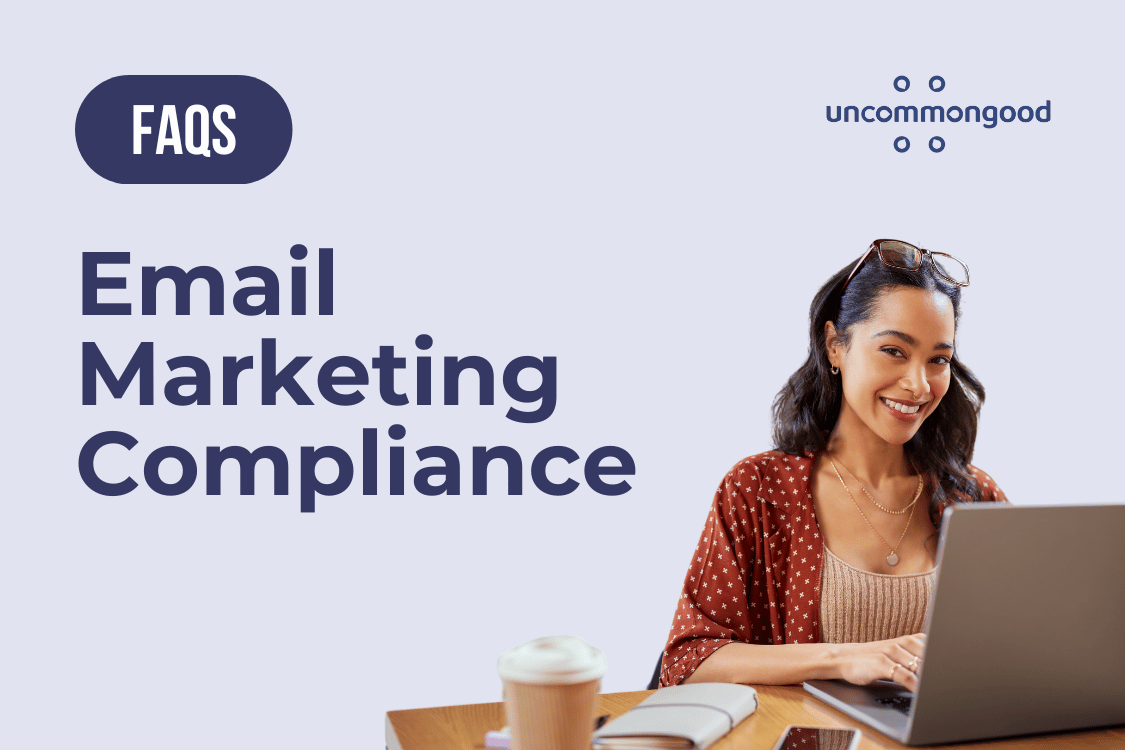Marketing emails are subject to certain compliance rules designed to prevent recipients from receiving malicious and unwanted messages; they also protect consumers’ privacy. These rules also help legitimate emails get to their intended recipients, which is a win for senders too. And since email marketing is such an effective way to connect with your customers (both current and future!), it’s incredibly important that you’re compliant with these rules.
Here are some frequently asked questions about marketing email compliance to help you navigate this sometimes confusing world.
Why is Email Marketing Important?
Email marketing compliance is crucial because it ensures that your marketing practices adhere to legal standards, protecting both your business and your customers. Compliance with laws like the CAN-SPAM Act and GDPR helps avoid significant fines and legal issues. Additionally, keeping everything above board when it comes to email marketing fosters trust with your audience, as compliant practices respect consumer privacy and preferences. By adhering to these standards, businesses maintain their reputation, reduce the risk of spam complaints, and improve the overall effectiveness of their email marketing campaigns.
What is The Can-Spam Act and How Does it Affect Email Marketing?
The CAN-SPAM Act is a law that sets rules for commercial email, establishes requirements for commercial messages, gives recipients the right to have you stop emailing them, and spells out tough penalties for violations. It affects email marketing by requiring businesses to be honest in their subject lines, to identify the message as an ad, to tell recipients where they’re located, and to provide an easy way to opt out of receiving future emails.
How Do GDPR Regulations Impact Email Marketing?
The General Data Protection Regulation (GDPR) is a European Union regulation that governs the privacy and protection of personal data. Under GDPR, email marketers must:
- Obtain explicit consent to collect personal data,
- Provide clear information about how the data will be used, and
- Give individuals the right to access, correct, delete, or transfer their data.
What Constitutes Consent for Sending Marketing Emails?
Consent for sending marketing emails typically involves an explicit opt-in by the recipient. This can be a sign-up form on a website, a checkbox at the point of sale (which should not be pre-checked), or a similar direct mechanism where the recipient agrees to receive emails. Consent should be given freely, specific, informed, and unambiguous.
Are There Specific Rules for the Content of Marketing Emails?
Yes, there are specific rules for the content of marketing emails. These include:
- Identifying the message as an advertisement
- Providing a valid physical postal address of the sender
- Ensuring that the subject lines and headers are not deceptive
- For emails targeting audiences in specific regions, the content must comply with local laws and cultural norms.
What are the Penalties for Non-Compliance in Email Marketing?
Penalties for non-compliance in email marketing can vary depending on the jurisdiction and the specific laws violated. Under the CAN-SPAM Act, for example, each separate email in violation of the law is subject to penalties of up to $43,280. GDPR violations can result in fines of up to €20 million or 4% of the company’s global annual turnover, whichever is higher. Non-compliance can also damage a company’s reputation and lead to a loss of customer trust.
How Often Should I Refresh Consent for Email Marketing?
There’s no one-size-fits-all answer, but it’s good practice to periodically reconfirm consent, especially if you haven’t interacted with a recipient in a long time. The GDPR doesn’t specify a time limit, but it does require that consent is current and valid. A common practice is to refresh consent every one to two years.
What is The Difference Between Single Opt-In And Double Opt-In for Email Subscriptions?
Single opt-in is when a user signs up (such as by entering an email address on a website) and is added to the email list immediately.
Double opt-in involves an additional step: after signing up, the user receives a confirmation email and must click a link to verify their subscription.
Double opt-in is often recommended for better list quality and compliance.
Is it Necessary to Segment Email Lists Based on Geography for Compliance Purposes?
Segmenting email lists by geography is essential if you have recipients in multiple jurisdictions with different email marketing laws (like GDPR in Europe and CAN-SPAM in the United States). Tailoring your approach to each region’s regulations can help ensure compliance.
How Should I Handle Unsubscribe Requests in Email Marketing?
Compliance regulations typically require that unsubscribe requests be straightforward, accessible, and honored promptly (usually within 10 business days). It’s important to provide a clear and easy-to-find unsubscribe link in every marketing email and ensure that the process is as simple as possible.
Note: As of February 1, 2024, Google will require bulk senders (individuals or businesses who send 5,000 or more emails per day) to provide a one-click unsubscribe option in every email, along with other requirements. Yahoo will have the same requirement starting in June 2024. Learn more about new guidelines for bulk email senders.
Are There Specific Considerations for B2B Email Marketing Compared to B2C?
Yes, there can be differences. B2B (business-to-business) email marketing often operates under different assumptions and can sometimes have different rules compared to B2C (business-to-consumer). For example, in some jurisdictions, implied consent may be more acceptable in a B2B context, particularly if there’s an existing business relationship. However, compliance with relevant laws and regulations is still mandatory.
What are the Best Practices for Maintaining Email List Hygiene?
Cleaning your email list(s) regularly (at least once per year) can improve engagement rates and deliverability, reduce the risk of spam complaints, and ensure better compliance with email marketing regulations. Here are some ways to clean your email lists:
- Removing inactive subscribers
- Correcting typos in email addresses
- Eliminating duplicates
Remember, these FAQs provide general guidelines and aren’t a substitute for legal advice. It’s always best to consult with a legal expert or compliance professional for advice related to your email marketing practices.
Stay (Email) Compliant with UncommonGood!
UncommonGood’s email tools help you stay compliant with the latest email marketing compliance requirements. Sign up for a free trial of UncommonGood and elevate your email marketing game today!




